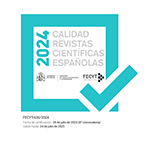The function of the image of the dog in Plato’s Republic
Abstract
Among the activities essential to the survival and equilibrium of Callipolis, the city described in the Republic, political and military functions occupy a predominant place. To this extent, their exercise is conditional on the possession of a certain number of physical, moral and intellectual qualities, among which is a proportionate mixture of two opposing character traits: gentleness and aggressiveness. To confirm the coexistence of this curious mixture in an individual, Socrates evokes the image of a pedigree dog, in which the coexistence of these two qualities is expressed in its docility towards its masters and its hostility towards strangers. The image of the dog plays a decisive role in the Republic in that it allows Socrates to demonstrate the naturalness of his project and to justify the radical methods for perfecting the genos assigned to political and military functions. The aim of this article is to analyse the theoretical implications of the use of this image as a model of the political order and the way of life of the guardians of the Republic and the way in which this image intervenes in the construction of a conception of physis which, far from being univocal, varies according to the needs of the Socratic argument.
Downloads
Article download
License
In order to support the global exchange of knowledge, the journal Logos. Anales del Seminario de Metafísica is allowing unrestricted access to its content as from its publication in this electronic edition, and as such it is an open-access journal. The originals published in this journal are the property of the Complutense University of Madrid and any reproduction thereof in full or in part must cite the source. All content is distributed under a Creative Commons Attribution 4.0 use and distribution licence (CC BY 4.0). This circumstance must be expressly stated in these terms where necessary. You can view the summary and the complete legal text of the licence.











